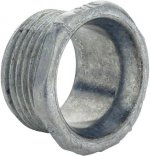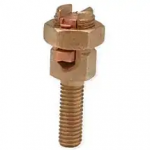Hello all, looking for any product or manner to provide additional abrasion/mechanical wear protection on an industrial vibrating unit. There is a hard metallic edge where the wires exit the conduit and enter inside the junction box (peckerhead) that tends to rub and wear. The branch circuit wires (THHN) are crimped with insulated ring lugs and fastened to a 6 stud motor terminal block inside the motor junction box . It comes from the factory with insulation putty to hold down the motors wiring and we add some additional insulation putty to help hold down the branch circuit wires.
I have been utilizing some 3M glass cloth electrical tape wrapped around the wires in the area of the metallic edge. I ask the question here so I can see what the professionals like yourselves utilize in the field for an issue like this.
Thank you for your time.
I have been utilizing some 3M glass cloth electrical tape wrapped around the wires in the area of the metallic edge. I ask the question here so I can see what the professionals like yourselves utilize in the field for an issue like this.
Thank you for your time.


